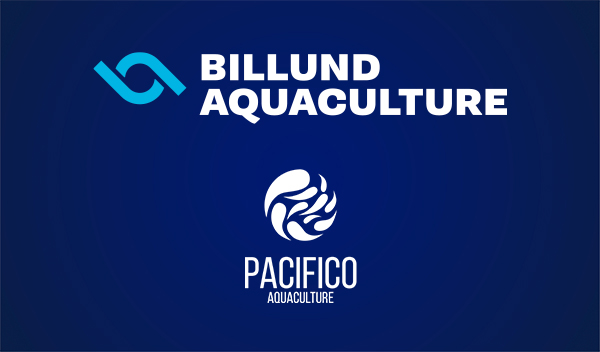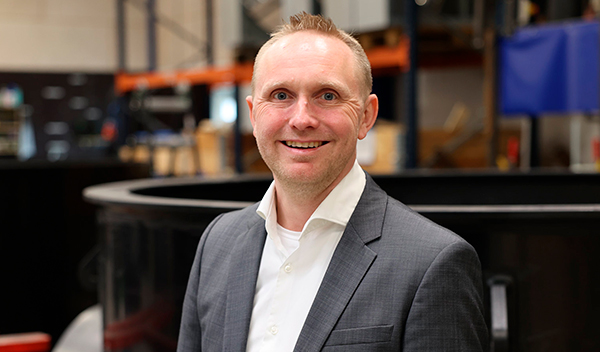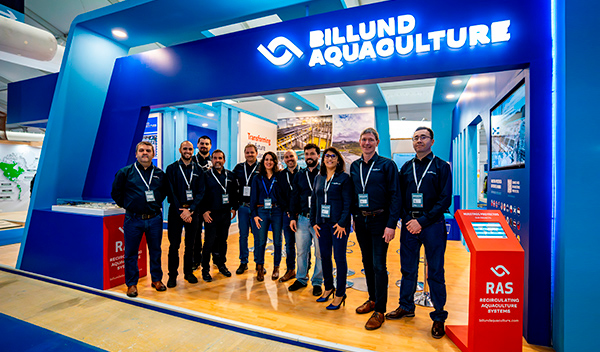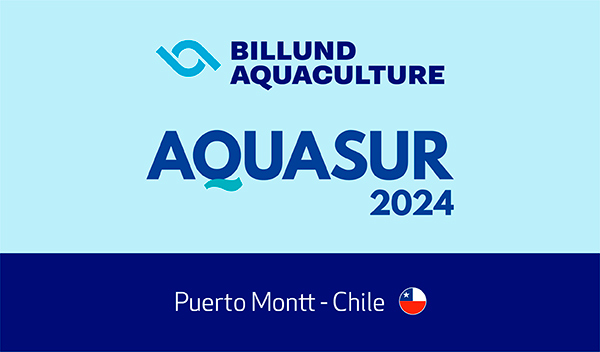Billund to build first large-scale RAS nursery for striped bass
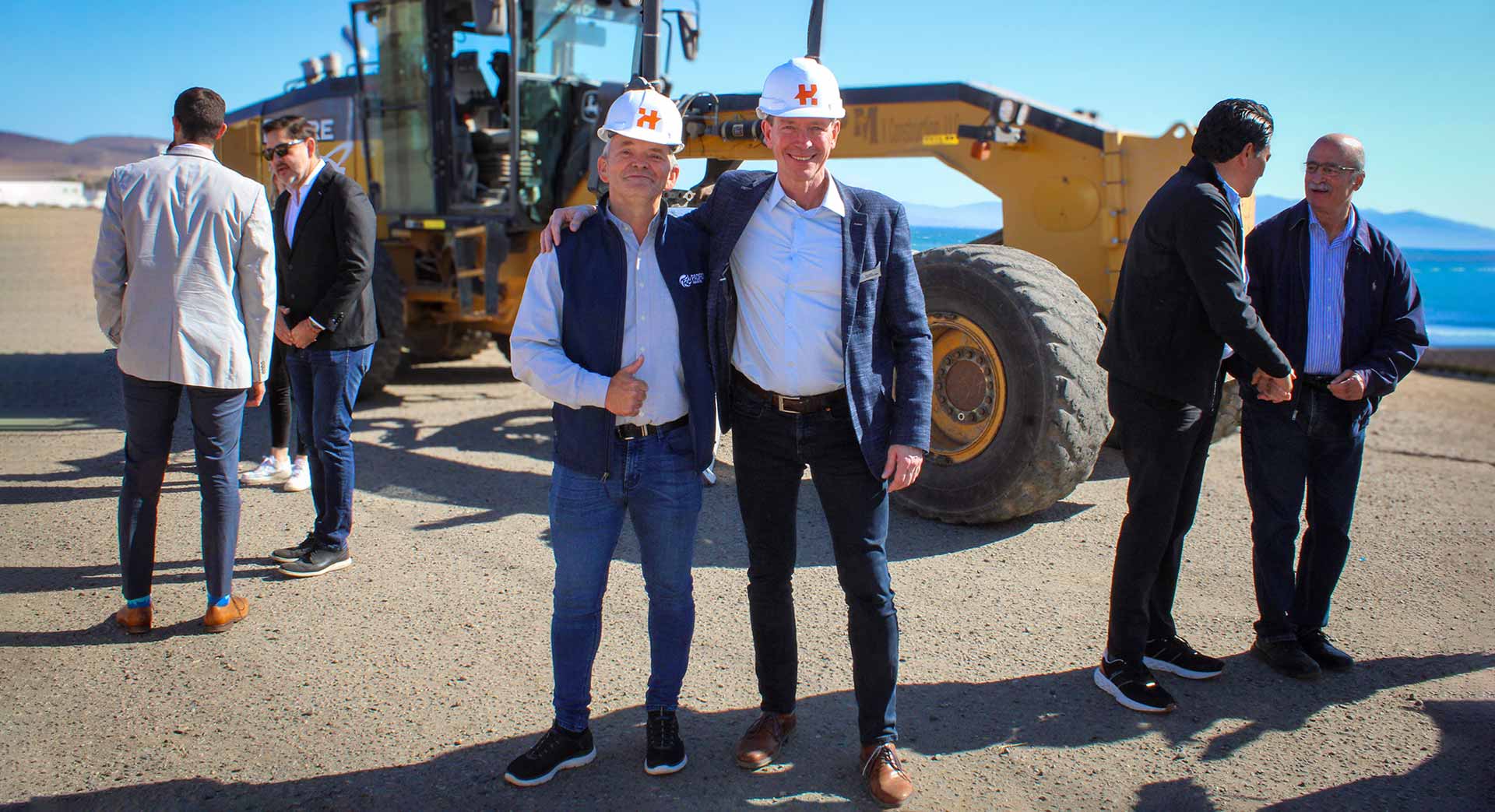
(Per-Roar Gjerde, CEO in Pacifico Aquaculture and Bjarne Hald Olsen, CSO in Billund Aquaculture)
Billund to build first large-scale RAS nursery for striped bass
Billund Aquaculture is set to begin construction of the facility in Ensenada, Baja California, Mexico, early next month, with a production capacity of 8 million fish per year.
Mexican company Pacifico Aquaculture has commissioned Billund Aquaculture to design and implement a Recirculation Aquaculture Systems (RAS) project for its new land-based hatchery and nursery, which will be the first in the world to produce striped bass (Morone saxatilis) at scale.
The facility will be built in the Ensenada Bay area of Baja California, Mexico and produce 80g juveniles that will subsequently be transferred to the company’s grow-out sites, located nearby, about 20km from the coast of the Pacific Ocean.
Although there have been several experiences worldwide of farming hybrid striped bass (Morone chrysops + M. saxatilis) in freshwater RAS, this will be a first for striped bass. Moreover, with operations in over 30 countries worldwide, this is Billund Aquaculture’s first RAS design project in Mexico.
The fish
Striped bass is an outstanding and versatile fish and is well known on the east coast of the US as both a sport fish and for seasonal wild commercial fishing from Virginia to Maine. Pacifico’s striped bass, because of the controlled environment it’s raised in, is particularly great for sushi and sashimi. Pacifico Aquaculture is the only dedicated pure breed striped bass fish farmer in the world and the first marine finfish company in Mexico to obtain four-star certification for Best Aquaculture Practices.
The company’s CEO, Per-Roar Gjerde, commented “We are thrilled to have with us Billund as a main supplier to build the first Striped Bass RAS facility in the world. This is the before and after for Pacifico Aquaculture in its growth as a company and in a start of creating a new industry in Baja California Mexico. This project will allow us to build a state-of-the-art hatchery and nursery facility and unlock 20,000 metric tons of annual production capacity to meet the world’s growing demand for healthy, nutritious seafood.”
With a long career in salmon farming, Per-Roar Gjerde said that Pacifico Aquaculture started working with striped bass in 2010 because “This fish is perfect for cooking because of its fat content, which is apt for different methods of preparation, including whole, raw, grilling, poaching, and braising. As sashimi, it’s the best I have ever tasted in my seafood life and cooked, it has a flaky texture with skin that crisps beautifully. It’s a great and healthy choice, however you prepare it.”
The land-based farm
The project consists of the first RAS hatchery for striped bass anywhere in the world, with a production capacity of 8 million 80g fish per year. With a total surface area of 9,250 m2 (~2.29 acres), the land-based farm is expected to start construction in January 2024 and be in full operation by the end of 2025.
This new site will include 17 independent intensive-RAS units, based on fix-bed biofilter technology, and contain 10 broodstock systems, two larval systems, two weaning systems and three nursery systems.
Speaking about the project, Marcelo Varela, CEO of Billund Aquaculture Chile, said, “This is a very important contract for Billund Aquaculture because it represents a major step towards diversifying the number of species farmed using RAS. Also, Mexico is a completely new market for us with huge potential, due to the diversity of new species that can be farmed, and due to its proximity to such an important market as the United States. This whole area holds enormous possibilities for farming different high-value species that are suitable for RAS and we are thrilled to explore these new opportunities.”
Bjarne Hald Olsen, CSO in Billund Aquaculture added, “We are very excited that this RAS facility is finally about to become a reality after a very long time working with Pacifico. We have been discussing the conceptual and design details for a long time, trying to make it as efficient as possible through the best solutions and technology. With the combined knowledge of Pacifico’s specialists in striped bass production and Billund´s experienced RAS engineers, this is the perfect match for designing the most optimal facility for this species. We feel confident that the project will be a success and are eager to get started with this partnership.”
The location
Due to be built near the ‘Playa Tres Emes’ beach, 14km north of Ensenada, the companies chose this location due to its proximity to the sea and access to sea water, 100% of which will be used to supply the RAS systems. Sea water will be pumped through a 1.2km (~0.75 miles) pipe into the site.
RAS, an environmentally friendly technology that involves very low water consumption was chosen for this project because the facility will be built close to El Sauzal, one of the few public access beaches in the Ensenada Bay area meaning that minimal environmental impact must be guaranteed.


